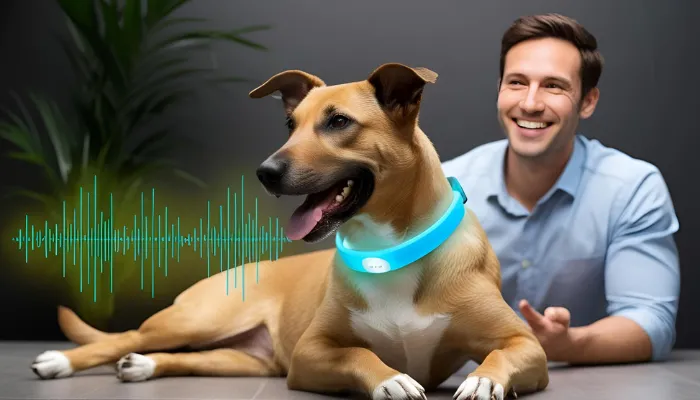How Do I Say “I Love You” in Dog Translator? If you have ever wanted to express to your pet just how much you value them, you are not alone. The concept of a dog translator has captured the interest of virtually all pet enthusiasts, especially with the existence of apps and devices that claim to translate barks and whines into human speech.
While technology continues to progress, the true magic in showing love is hidden in the dog’s behavior and its communication. This article will discuss how to operate a dog translator, but more importantly, how to love your dog in ways that they fully comprehend.

How to Say “I Love You” in Dog Translator?
The idea of a dog translator is not that old, and many tools and apps that claim to interpret barks, whines, and growls into human language are available. Even though these tools are poorly crafted, they indicate our willingness to use technology to communicate with our best friends. So, how do I say “I love you” in dog translator? It all comes down to the power of using technology with an anthropological perspective on dogs.
Steps to Express Love Using a Dog Translator:
- Choose a Reliable Dog Translator App or Device: Investigate items that have good reviews and a scientific basis for them.
- Observe Your Dog’s Reactions: Take note of the way your dog behaves in response to various tones and words.
- Use Simple, Repetitive Phrases: Dogs are taught through repetition, and so phrases such as “good boy” or “I love you” should be said in a cheerful tone over and over again.
- Pair Words with Actions: When expressing affection, words should be combined with an appropriate action.
Expressing love to your dog goes beyond words—How Do I Say “I Love You” in Dog Translator?” is not just about technology but about actions, empathy, and building a lifelong bond.
Science Behind Dog Translators
Dog translators operate by examining patterns, pitch, frequency, and other vocal elements to interpret the emotions or intentions of a dog. Even though they cannot translate human speech into “dog language,” their functionality can help in comprehending a dog’s emotional state better. A low frequency bark expresses excitement, while a low growl indicates discomfort.
Table: Common Dog Sounds and Their Meanings
| Sound | Possible Meaning | How to Respond |
|---|---|---|
| High-Pitched Bark | Excitement or Playfulness | Engage in play or offer a treat |
| Low Growl | Warning or Discomfort | Give space or assess the situation |
| Whining | Anxiety or Need | Provide comfort or address the need |
| Howling | Loneliness or Communication | Spend time with your dog or check for triggers |
Understanding your dog’s sounds and signals is key to strengthening your bond and ensuring their happiness.
Practical Ways to Say “I Love You” to Your Dog
Technology does aid in communication; however, How Do I Say “I Love You” in Dog Translator?” The best way is by loving your dog consistently through actions, affection, and understanding their unique needs. Here are a few tips:
1. Quality Time Together
Whether it is a walk at the park, sitting side by side, or playing fetch, simple companionship puts your dog over the moon.
2. Positive Reinforcement is Vital
This not only helps you two bond, but also makes it easier for your dog to learn what type of behavior brings them more treats, praise, and affection.
3. Learn and Understand Love Languages
Every dog is different. Some will enjoy a good cuddle while others would prefer some interactive playtime. Always be observant to which interaction brings out the most happiness in your dog.
4. Maintain Eye Contact
To dogs, gentle eye contact can convey trust and affection. Avoid staring, as it tends to be threatening to dogs.
5. Speak Their Language
When expressing love, use a calm and soothing tone. Simple warm phrases such as “good boy” or “I love you” could be strong cues for your dog.
Showing love to your dog is all about understanding their needs and expressing affection in ways they truly appreciate.
Role of Technology in Canine Communication
Technology such as dog translators, while very helpful, should augment rather than replace the core of human-dog relationship, which is, interactions. These devices aid in decoding barking sounds, check for a dog’s health, and observe behavioral patterns. Still, they should never replace old and trusted bonding methods.
Pros and Cons of Dog Translators:
| Pros | Cons |
|---|---|
| Helps interpret basic emotions | Limited accuracy and reliability |
| Can strengthen the human-dog bond | May lead to over-reliance on technology |
| Provides insights into dog behavior | Expensive and not widely accessible |
Technology can enhance communication with your dog, but true connection comes from love, patience, and daily interaction.
Conclusion
How Do I Say “I Love You” in Dog Translator? Any technology that promises to translate dogs suggests that there is love, but as mentioned, the most powerful love can be expressed with constant pats, good moments, and interpreting different tones of a person’s voice.
Dog translators may enhance understanding, but they can’t substitute the relationship developed from caring and trust. Indeed, love can be professed with the help of a machine, but the machine has to be meticulously balanced with warm human gestures.
